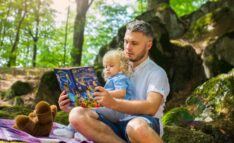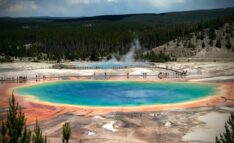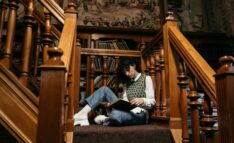Free Homeschool Resources: Tapping into Online Museum Offerings
Deirdre Palmer, MAT
Enrich Your Curriculum with Free Homeschool Resources: Online Museum Tools for Engaging Teaching and Learning
How can online museum resources invigorate teaching and learning? How can these free homeschool resources complement and enrich curriculum? As an example, the National Gallery of Art in Washington, DC offers free online learning resources for Pre-K through 12th grade educators.
Online lessons, downloadable high-resolution images, and self-paced courses provide educators with tools to help students actively engage with works of art. Suggested looking exercises, essential questions, and activities are designed to encourage students to observe, describe, and reason with evidence as well as think critically and imaginatively. Through conversations around works of art, students can connect to prior knowledge and further their understanding of different subject areas.
Online Lessons
Dozens of online lessons for Pre-K -12 educators are arranged by grade level and broken down into six categories: History, English Language Learners, Math, Science, Elements of Art, and Writing. Each lesson includes background information, featured works of art, open-ended questions, and activities.
Uncovering America connects art and US history in thematic modules that address a range of topics from the Industrial Revolution to the environment to immigration to the Civil Rights Movement. These lessons provide strategies to use works of art as primary resources that help students connect to and build upon their knowledge of US history.

Lessons designed for English Language Learners (ELL) build students’ comprehension as well as speaking and writing skills. Through looking and discussion prompts, students “read” a work of art and practice their language skills by describing the plot and setting. Students then reason with evidence and think imaginatively to consider what the plot might be.
Art can be a vehicle through which students learn math concepts. Elementary school students practice fractions, addition, and subtraction through an exploration of Wayne Thiebaud’s painting Cakes. Through careful examination of Alexander Calder’s mobiles, middle school students can learn about balance.
Portraits, sculptures, history paintings, genre scenes, and landscapes can serve as powerful sources of inspiration for creative writing. Lessons designed for 5th-12th grade students include prompts for activities such as composing poems, writing journal entries, and creating first-person monologues.
Art Tales for Pre-K pairs children’s literature with works of art from the National Gallery’s collection. Each unit focuses on a specific artist and includes questions that will encourage young learners to observe and describe as well as thinking critically and imaginatively. Learners make connections between the book, the artist, and the work of art through a simple, culminating art activity.


Downloadable High Resolution Images
On NGA Images, there are more than 53,000 high resolution images from the National Gallery’s collection that are available to download free of charge. Create an account to download images, access advanced search options, and create personalized lightboxes.
Online Course
In the self-paced course, Teaching Critical Thinking through Art with the National Gallery of Art, educators learn how to use strategies adapted from Artful Thinking pedagogy, developed by Project Zero at the Harvard Graduate School of Education. By registering for this free online course, educators have access to lesson plans, immersive activities, and discussion boards. The course also includes demonstration videos of classroom and museum educators facilitating lessons for students of varying ages.
Virtual Family Programs
During the family program, Virtual Artful Conversations, museum educators lead participants in a 60-minute guided conversation of a work of art from the National Gallery’s collection. This program is recommended for children ages 7-12 years old accompanied by an adult.

Additional Free Homeschool Resources
Take a deep dive into free homeschool resources and education programs offered by the National Gallery of Art and other museums across the US (and the world!) to discover ways to energize teaching and learning!
Exploratorium, Learning Toolbox
National Museum of African American History and Culture, Talking about Race
National Museum of American History, History Explorer
National Museum of the American Indian, Native Knowledge 360˚
Philadelphia Museum of Art, Looking to Write, Writing to Look
Incorporating online museum resources into your homeschool curriculum can open new avenues for creativity, critical thinking, and deep exploration across subjects. Museums like the National Gallery of Art provide engaging, free tools that bring history, literature, math, and science to life through the lens of art. Whether you’re teaching young learners to observe and describe or guiding older students in connecting art to historical events, these resources enhance and energize learning experiences.
For more tips on designing a well-rounded history program, check out our guide on Homeschool History: How to Plan It.
Meet the Author!
Deirdre Palmer has worked as a museum educator with school tours and docent programs at the National Gallery of Art since 2006. She develops and conducts school tours for students 4 years old through 12th grade and manages a corps of 85 volunteer docents. Deirdre also teaches family programs, facilitates professional development sessions for teachers, leads programs for the general public, and works with the Gallery’s outreach program, Art Around the Corner. She has at BA in Art History from the University of North Carolina-Chapel Hill and a M.A.T. with a concentration in museum education from The George Washington University. Deirdre can be reached via email at d-palmer@nga.gov.





